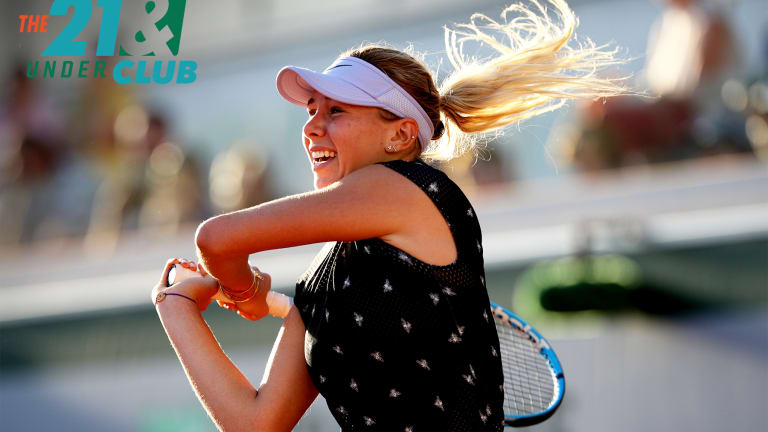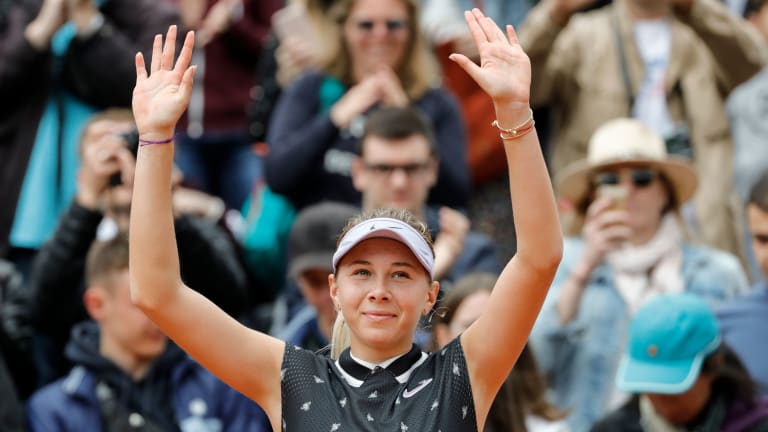The 21 & Under Club: Amanda Anisimova
By Jun 20, 2019WTA Charleston, USA
"Jeez!" Jessica Pegula holds off Amanda Anisimova in decisive Charleston tiebreaker
By Apr 03, 2024WTA Charleston, USA
Katie Volynets wins longest WTA singles match of the year in Charleston
By Apr 02, 2024Australian Open
Novak Djokovic avoided Ben Shelton, but Adrian Mannarino—who simply won't go away—could be a test
By Jan 20, 2024Australian Open
Coco Gauff tries to do something she's never done at the Australian Open
By Jan 20, 2024Australian Open
Amanda Anisimova, reluctant prodigy, faces Aryna Sabalenka and her relationship with tennis
By Jan 20, 2024Australian Open
6-0, 6-0: Aryna Sabalenka clinches first Grand Slam double bagel at 2024 Australian Open
By Jan 19, 2024Australian Open
Paula Badosa is No. 100. Amanda Anisimova is No. 442. Why this third-rounder is so compelling
By Jan 18, 2024Social
Cool Rider: Hubert Hurkacz pulls up to art gallery in Triple Crown Wrap McLaren GT
By Aug 27, 2023Social
Amanda Anisimova reveals college plans in new Instagram update
By Aug 19, 2023The 21 & Under Club: Amanda Anisimova
Amanda Anisimova has found success in the pros at 17. Just wait until she realizes her full potential.
Published Jun 20, 2019
Advertising

The 21 & Under Club: Amanda Anisimova
Advertising

The 21 & Under Club: Amanda Anisimova
© AFP/Getty Images